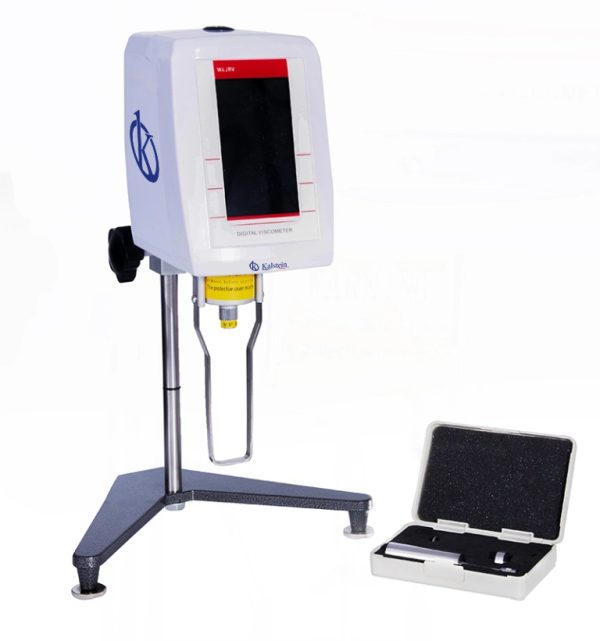A viscometer is a device used to measure the viscosity of a liquid. Viscosity is described as the resistance of a liquid to flow. This resistance depends mainly on the molecular property of the liquid. Viscosity is measured in units of poise, centipoise or centimeter diameter. A viscometer is an essential tool for the manufacture of liquid products such as adhesives, paints and oils.
A viscometer consists of a tube through which a gravitational force or pressure is impressed and measured to obtain the viscosity of a liquid. The tube is specifically shaped so that the liquid flows uniformly and does not stagnate or slow down. The liquid passes through the viscometer, the velocity is measured and a measurement is obtained on the viscosity scale. With older equipment, the measurement is made with the aid of a standardized table, while with today’s equipment, the measurement results are displayed on an LCD screen.
How are viscosity readings taken in laboratories?
The most common and accurate way to measure viscosity with a viscometer is using the capillary technique. This technique consists of a small tube inside the viscometer called a capillary, which is filled with a liquid. The liquid is pulled through the capillary tube and the flow times between the holes in the viscometer are measured. These flow times can be accurately measured at different degrees of pressure.
To obtain accurate results with the viscometer, the equipment must be properly calibrated before each use. Calibration is a process that involves adjusting the parameters of the viscometer so that it functions correctly. This is done by making adjustments to the pressure, temperature and adjusting the length and diameter of the viscometer capillary tube. These adjustments ensure that the viscometer is operating with the correct parameters and that the results are accurate.
In addition to the calibration process, there are other factors that must be taken into account to obtain accurate results with a viscometer. The liquid flow must be controlled uniformly, i.e., the liquid must flow with the same velocity and pressure through the viscometer. This will help minimize measurement uncertainty and ensure that the liquid flows uniformly through the dissipator.
Under what experimental conditions are accurate viscosity measurements obtained?
Following on from the above, it is also important to ensure that the liquid to be measured has the same state for all measurements. This is because liquids change viscosity when subjected to changes in temperature. Since the viscosity changes with the degree of heat the substance has, the temperature of the liquid must be controlled so that all measurements are accurate.
Once all precautions have been taken, the liquid must be controlled in the viscometer to obtain accurate measurements. This includes removing any residue or air bubbles in the viscometer to avoid erroneous measurements. It is also important to ensure that the liquid sample is homogeneous and that there are no changes in viscosity during its measurement. Finally, safety must be a priority when using viscometers.
It is recommended to use them with protective clothing and appropriate equipment. In addition, it is important to follow the manufacturer’s instructions to avoid personal injury and equipment damage. In conclusion, obtaining accurate results with viscometers requires proper equipment calibration, temperature control, sample homogenization, uniform flow control and good safety practice. Performing these steps will ensure that the results obtained are reliable and accurate.
The accuracy of Kalstein viscometers
The technology used in the construction of Kalstein viscometers means that precise and accurate measurements are obtained. With the Brookfield YR05861 // YR05863 Digital Rotating Viscosity Tester Viscometer, measurement accuracies approaching 1% are achieved when measuring viscosities between one and two million cps. To arrange the purchase of any of our equipment, and to know the selling prices, please go to the web sites HERE and HERE.

